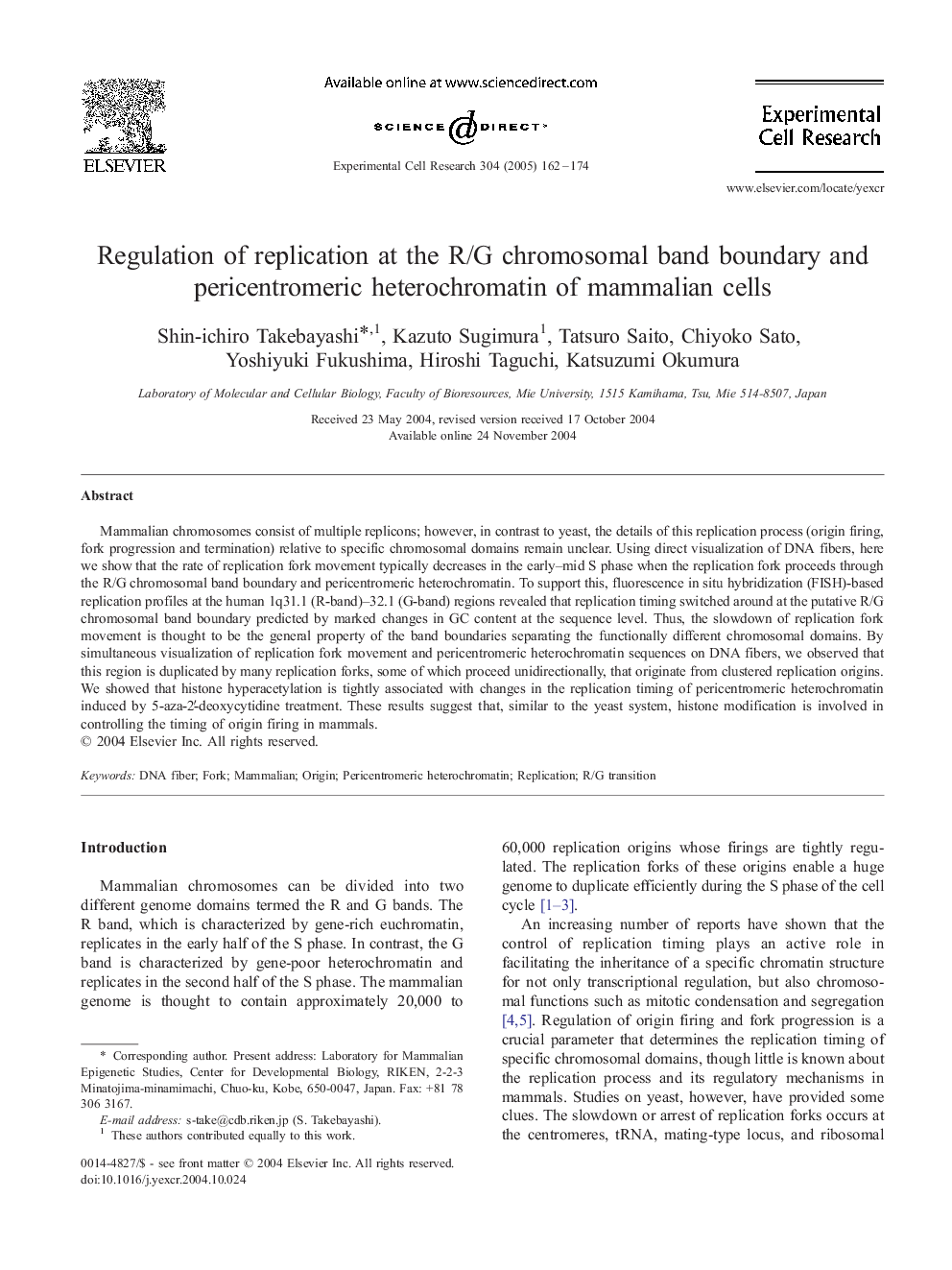| Article ID | Journal | Published Year | Pages | File Type |
|---|---|---|---|---|
| 10905608 | Experimental Cell Research | 2005 | 13 Pages |
Abstract
Mammalian chromosomes consist of multiple replicons; however, in contrast to yeast, the details of this replication process (origin firing, fork progression and termination) relative to specific chromosomal domains remain unclear. Using direct visualization of DNA fibers, here we show that the rate of replication fork movement typically decreases in the early-mid S phase when the replication fork proceeds through the R/G chromosomal band boundary and pericentromeric heterochromatin. To support this, fluorescence in situ hybridization (FISH)-based replication profiles at the human 1q31.1 (R-band)-32.1 (G-band) regions revealed that replication timing switched around at the putative R/G chromosomal band boundary predicted by marked changes in GC content at the sequence level. Thus, the slowdown of replication fork movement is thought to be the general property of the band boundaries separating the functionally different chromosomal domains. By simultaneous visualization of replication fork movement and pericentromeric heterochromatin sequences on DNA fibers, we observed that this region is duplicated by many replication forks, some of which proceed unidirectionally, that originate from clustered replication origins. We showed that histone hyperacetylation is tightly associated with changes in the replication timing of pericentromeric heterochromatin induced by 5-aza-2â²-deoxycytidine treatment. These results suggest that, similar to the yeast system, histone modification is involved in controlling the timing of origin firing in mammals.
Related Topics
Life Sciences
Biochemistry, Genetics and Molecular Biology
Cancer Research
Authors
Shin-ichiro Takebayashi, Kazuto Sugimura, Tatsuro Saito, Chiyoko Sato, Yoshiyuki Fukushima, Hiroshi Taguchi, Katsuzumi Okumura,
